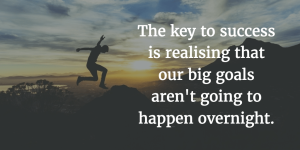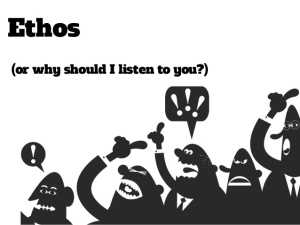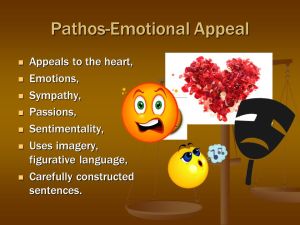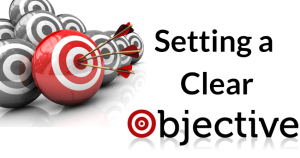
Pages from my forthcoming book, ‘PowerPacked Personality’ for Your FREE reading!
Here are some more pages continued from where we left…..
Last week we had talked about the first step to realize your dream is to write down your specific goals. When you become very clear about your goal which will help you to realize your dreams, you have to work out a plan of action for realizing each of your specific goals. Here are some further pages which I hope you will need to understand and make suitable efforts. We have to always remember that anything significant cannot be achieved without consistent hard work. Perseverance is the key to climbing up. Leader of success is steep and difficult, but the rewards merit all.
Implementing your goals
- Why do you set your goals? Let’s consider this basic question. The simple answer is that you are not happy with your present status and you want to improve. Now let’s consider who is responsible for your present status? Your circumstances, influence of your parents, teachers, friends, relatives, neighbor and all those who have been interacting with you. They have influenced you mind which in turn has influenced your actions and behavior. Over the years you have formed some habits. Triggered by your habits, you continue to do the same things over and over again. Your relationships with others remain the same. Nothing changes. Therefore you don’t own what you want; you don’t garner respect from others. Life is drudgery. Nothing to look forward to. You accept that this reality and you have to live with it. And then, you write down your goals. These could be about health, career, finance, family, hobby and even spirituality.
- Once we understand that you background and habits have brought you to a situation which you are not happy with, you need to do whatever it takes to change these influences and most importantly change your habits. You may not be able to change company of everyone around you, but you can choose to divide your time according to your choice.

Implement Goals Quotes:
- People will always have an opinion, but you have to live life the way you want to. It’s very easy to tell others what to do, but difficult to implement it on yourself.
- Set some goals. Stay quiet about them. Smash the hell out of them. Clap for your damn self.
- Success is steady progress toward one’s personal goals. (Jim Rohn)
- You’ll never change your life until you change something you do daily. The secret of your success is found in your daily routine.
- When a planner speaks of implementing goals rationally, he implies that it is possible to demonstrate logically and experimentally the relationship between the proposed means and the ends they are intended to further. (Alan A. Altshuler)
- In real life, strategy is actually very straightforward. You pick a general direction and implement like hell. (Jack Welch Winning)
Self-Belief
To be connected with earlier chapter.
In life it is necessary to have some beliefs. That does not mean that you need to follow any dogma or belief forced on you. You can pick your own beliefs with discretion. First, let us understand what is self-belief. What are the qualities that it inherits? Self belief is an invaluable virtue which brings great possibilities in your life. Its indications are that you:
- Stop making any excuses for any reason what-so-ever.
- Do not indulge in any negative thought.
- Stop thinking that difficulties surround you alone. You do not jump to conclusion and take hasty actions. You express your fears to others without any hesitation, because you keep in mind that everyone has some fears.
- You stop procrastinating because that is indicative of your lack of confidence.
- Stop pursing perfection. Perfection is never achieved. It only stops you from moving ahead.
Once you develop self belief and you observe that you confirm to all what has been said above, you will find the following eight advantages coming to you smoothly and seamlessly.
- Self-belief enables you to hold strong conviction. All things do not happen the way you have planned or the way you expect. But strong conviction will help you to move ahead without fear of failure.
- Self belief also helps you develop optimistic attitude which is necessary today in the wake of fast changing world. Life is becoming extremely competitive. Any opportunity missed once may never come back again. But if you have a negative attitude you will not be able to catch the fleeting possibilities.
- Your self-belief also makes you more reliable to others.Thus you tend to build up better relations with others. Your credibility is not question. Since people can trust you they vie for good relations with you. Needless to say that for any significant project you need help from others.
- Self-belief also helps you to be focused and self motivated. You no longer take life as it comes. You don’t depend on unknown sources to bring you luck. You carve your own destiny. Self motivation helps you to maintain enthusiasm and interest in life.
- Your risk taking ability improves if you start relying on yourself. It is said that there are no gains if there are no risks. Your conviction helps you to take calculated risks in meeting the challenges of life. The tendency to avoid and escape facing challenging situation reduces substantially. You start realizing that difficulties form a necessary part of life.
- Further, self-belief enables you to give and receive constructive criticism with an open mind. In the current scenario exchange of ideas and views are extremely important. The autocratic leader is not acceptable any more. So if you want to progress you have to collaborate with others from your own organization or outside outfits.
- Self-belief helps you to be more assertive. You start caring for yourself more than pleasing others. Someone said that he doesn’t know any formula of how to succeed. The sure short formula for success has never been discovered. But there is a firm unbeatable formula for failure and that is trying to please everyone. Your self-belief will not allow you to embark on the journey of securing approvals where these are not mandatory.
- Last but not the least, you start working on improving your self respect. You realize that if you do not respect yourself, others will follow suit. When you’re in need to raise self esteem, you become more effective and you become more productive. Now, you start managing your time very effectively as any improper or inadequate use of your time will hurt your self-esteem.

Personal Productivity
Personal Productivity and its review constitute are essential ingriedients in the implementation and achievement of personal goals. But what is personal productivity? Does it mean how we manage our time? The answer is yes and no. Yes, time is an important aspect of personal productivity. Rather, it could be so provided your activities are aligned with your goals. And yet it is a lot more. Does it mean one’s achievement towards realization of personal goals? Not just that! Personal goals may change. Personal vision may change. And if one may say so personal mission statement if one ever cares to establish that – that also may change.
When we talk of mission statement or vision or an organization, that hardly ever changes. But when we are talking of an individual, the factors that affect a person’s likes and dislikes, desires, drastically change with changing circumstances, or even without these.
The most important factor for a person’s success is his/her personal productivity. As we growwe realize that it is not just money, not just health, not just family, or your social status, hobbies etc., that bring you happiness, but it is a combination of all these in varying proportions. So what we need to do is to align all our activities to achieve whatever we want in the aforesaid different fields.
Therefore a daily review of what you do becomes very important. In the highly competitive world we have today, the targets that the organizations set for you are hard ones. These sap your energy and rob you of the power and ability to think what you must do. You only start following sometimes even unachievable targets. In the process, you totally destroy you concept of personal productivity.
Hence, what is really needed is to have the right balance and proper perspective towards life. It is only such a healthy attitude that strikes a right balance between family and friends, home and work, health and money that will lead to a truly happy and successful life.

























